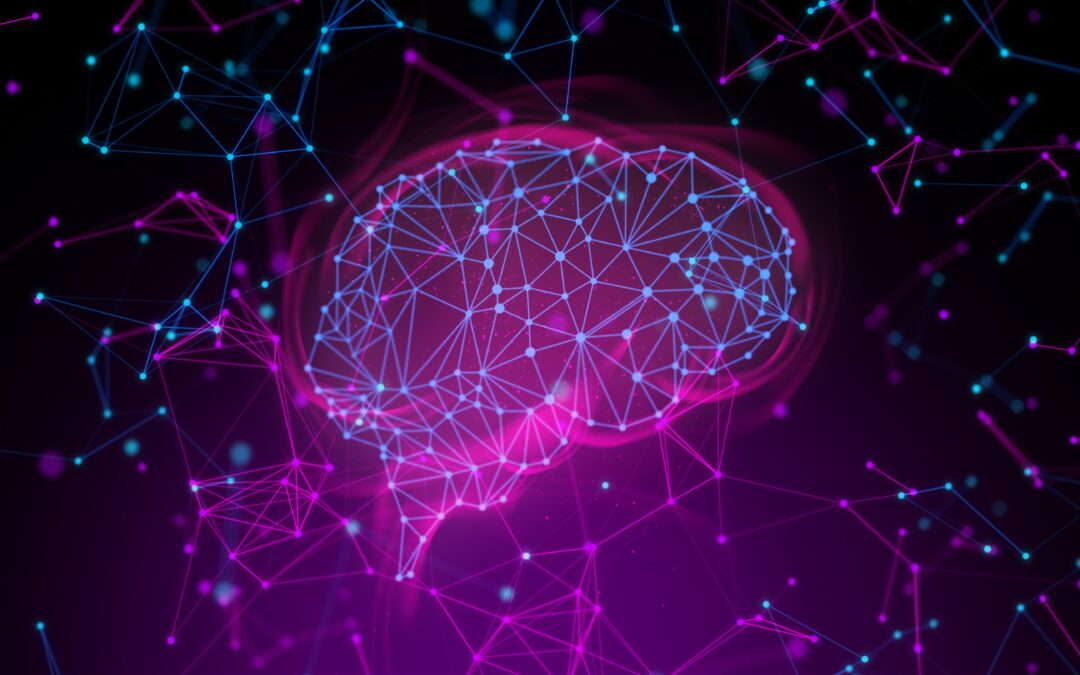At its core, working memory serves as a temporary storage and manipulation system for information relevant to ongoing cognitive tasks. However, the limited capacity of working memory necessitates selective mechanisms to determine which information gains access to this privileged mental workspace. This is where attention comes into play, acting as a gatekeeper that filters incoming information and prioritizes relevant stimuli for further processing.
The concept of attention as a limited resource has been a prominent theoretical framework for understanding the relationship between attention and working memory. Oberauer (2019) delineates several variants of this idea, including attention as a resource for storage and processing, a shared resource for perceptual attention and memory maintenance, and a resource for the control of attention. The first of these variants, which posits that the same attentional resource is required for both keeping representations available and carrying out basic cognitive processes, has received substantial empirical support (Chen & Cowan, 2009).
However, attention is not merely a passive resource to be allocated; it also functions as an active selection mechanism. This perspective has led researchers to investigate how different forms of attention interact with working memory, focusing on two main areas: attentional selection of working memory contents and the role of working memory in cognitive control (Oberauer, 2019).
One crucial aspect of attentional selection within working memory is the concept of the focus of attention. Oberauer (2013) proposed that only one item can be in the focus of attention at a time, receiving privileged access and being processed more quickly and accurately than other items in working memory. This focused item is protected from time-based decay and interference (Souza et al., 2014), suggesting that directing attention to specific items in working memory can enhance their retention and accessibility.
The importance of the focus of attention in working memory is further underscored by studies using retro-cues. Griffin and Nobre (2003) demonstrated that using retro-cues during the retention interval to direct attention to particular items improved recall accuracy for the cued items. This suggests that focused attention can protect items from interference and decay over time (Pertzov et al., 2013).
The ability to control attention and selectively focus on relevant information is not uniform across individuals. Kane et al. (2001) found that individuals with high working memory capacity were better able to resist attentional capture by distractors. This finding highlights the close relationship between attentional control capabilities and working memory performance, suggesting that those with better ability to control attention tend to have higher working memory capacity (Engle, 2002).
While the focus of attention within working memory plays a crucial role in enhancing performance, external stimuli can significantly impact this process. Salient stimuli, in particular, have been shown to capture attention automatically, potentially disrupting ongoing working memory processes. Awh and Jonides (2001) demonstrated that presenting salient distractors during the retention interval of a working memory task impaired performance.
However, the impact of salient stimuli on working memory is not straightforward. Gazzaley and Nobre (2012) found that the effect of salient distractors depends on their relevance to the task at hand. Relevant salient stimuli may enhance encoding into working memory, while irrelevant salient distractors typically impair performance. This nuanced relationship between salience and task relevance highlights the complexity of attentional capture and its effects on working memory.
Recent research has provided further insights into the relationship between salient distractors and working memory. Constant and Liesefeld (2021) used a parametric manipulation of salience and found a monotonic relationship between bottom-up saliency and the probability of memory for the item. Interestingly, the precision of the memory was not affected by saliency. This suggests that while salient items are more likely to be remembered, the quality of that memory is not necessarily enhanced.
The impact of distractors on working memory is particularly pronounced when the distracting stimuli are threatening in nature. Several studies have found that threat-related distractors are more likely to be unnecessarily stored in working memory, consuming limited capacity (Stout et al., 2013; Ye et al., 2018). This may be due to enhanced bottom-up attentional capture by threatening stimuli that overrides top-down control (Berggren & Derakshan, 2013).
The unnecessary storage of threatening stimuli in working memory can lead to competition for resources between these distractors and ongoing task-relevant processes (Holmes et al., 2014). This competition for resources highlights the importance of effective attentional control mechanisms in maintaining optimal working memory performance, particularly in the face of emotionally salient distractors.
While the detrimental effects of distractors on working memory performance are well-documented, recent research has also explored the potential for learned suppression of salient distractors. Adam et al. (2021) investigated how repeated exposures to salient distractors affect their ability to capture attention and impact working memory. Their results showed that stronger learned suppression is accompanied by reductions in memory precision and confidence in having seen a color singleton at all. This suggests that such suppression operates at the sensory level to prevent further processing of the distractor object.
These findings have important implications for our understanding of how attention and working memory interact. They suggest that attentional suppression can have downstream effects on memory and awareness, potentially serving as a mechanism to prevent irrelevant information from consuming limited working memory resources.
The relationship between attention and working memory is not unidirectional. The contents of working memory can also guide attention, highlighting the close integration of these cognitive processes. Olivers (2008) found that items held in working memory can automatically guide attention to matching stimuli in the environment. This bidirectional relationship underscores the intricate interplay between attention and working memory in shaping our cognitive experiences.
Recent research has also begun to explore how attention and working memory fluctuate over time. deBettencourt et al. (2019) found that fluctuations in sustained attention coincide with fluctuations in working memory performance, suggesting a moment-to-moment relationship between attentional state and working memory efficacy. This dynamic interplay between attention and working memory adds another layer of complexity to our understanding of these cognitive processes.
The role of attention in working memory is not limited to the maintenance phase but extends to all stages of working memory processing. Fougnie (2008) reviewed evidence suggesting that perceptual and central attention play different roles in the encoding, maintenance, and manipulation of information in working memory. While attention and working memory were found to interact closely during encoding and manipulation, the evidence suggests a limited role of attention in the maintenance of information.
Neuroimaging studies have provided valuable insights into the neural mechanisms underlying the interaction between attention and working memory. Lorenc et al. (2021) used model-based fMRI to investigate how distracting visual tasks impact working memory representations in visual and frontoparietal association cortex. They found that distraction causes the fidelity of working memory representations to briefly dip when both the memorandum and distractor are jointly encoded by the population activities. Interestingly, distraction induces small biases in memory errors which can be predicted by biases in neural decoding in early visual cortex, but not other regions.
These findings suggest that while distraction briefly disrupts working memory representations, the widespread redundancy with which working memory information is encoded may protect against catastrophic loss. This highlights the robustness of working memory representations in the face of distraction, while also pointing to the potential vulnerabilities in early sensory areas.
Understanding the complex relationship between attention, working memory, and distraction has important implications for real-world performance. Burgoyne and Engle (2020) argue that attention control is a better indicator of one’s overall cognitive capability than working memory capacity and/or fluid intelligence alone. They suggest that knowledge of an individual’s ability to control their attention should explain more variation in higher-order cognitive behaviors and performance than either working memory capacity or fluid intelligence.
This perspective has significant implications for how we approach the study of complex real-world tasks. By focusing on attention control rather than memory-based abilities, researchers may be better suited to explaining real-world behavior and performance in humans.
In conclusion, the relationship between attention, focus of attention, salient stimuli, distractors, and working memory performance is complex and multifaceted. Attention plays a crucial role in all stages of working memory, from encoding to retrieval. The focus of attention within working memory allows for the prioritization of specific items, enhancing their retention and accessibility.
Salient stimuli and distractors can significantly impact working memory performance by capturing attention and disrupting ongoing cognitive processes. However, the effect of distractors is not uniform across individuals, with those having better attentional control being more resistant to distraction.
Recent research has highlighted the importance of learned suppression of salient distractors and its impact on memory and awareness. These findings suggest that attentional suppression can have downstream effects on cognitive processes, potentially serving as a mechanism to prevent irrelevant information from consuming limited working memory resources.
Understanding these complex interactions has important implications for real-world performance, suggesting that attention control may be a better predictor of cognitive capability than traditional measures of working memory capacity or fluid intelligence.
As research in this field continues to evolve, it is clear that a comprehensive understanding of cognitive performance must consider the intricate interplay between attention and working memory. Future studies should continue to explore the dynamic relationship between these fundamental cognitive processes, considering both their aggregate effects and moment-to-moment fluctuations. This ongoing research will not only advance our theoretical understanding of these cognitive mechanisms but also inform practical applications in areas such as education, cognitive training, and the development of interventions for attention and memory disorders.
References
Adam, K. C. S., Byers, A., & Serences, J. T. (2021). Memory precision for salient distractors decreases with learned suppression. Journal of Experimental Psychology: Human Perception and Performance, 47(12), 1586-1598.
Awh, E., & Jonides, J. (2001). Overlapping mechanisms of attention and spatial working memory. Trends in Cognitive Sciences, 5(3), 119-126.
Berggren, N., & Derakshan, N. (2013). Attentional control deficits in trait anxiety: Why you see them and why you don’t. Biological Psychology, 92(3), 440-446.
Burgoyne, A. P., & Engle, R. W. (2020). Attention control: A cornerstone of higher-order cognition. Current Directions in Psychological Science, 29(6), 624-630.
Chen, Z., & Cowan, N. (2009). How verbal memory loads consume attention. Memory & Cognition, 37(6), 829-836.
Constant, M., & Liesefeld, H. R. (2021). Massive effects of saliency on information processing in visual working memory. Psychological Science, 32(5), 682-691.
deBettencourt, M. T., Keene, P. A., Awh, E., & Vogel, E. K. (2019). Real-time triggering reveals concurrent lapses of attention and working memory. Nature Human Behaviour, 3(8), 808-816.
Engle, R. W. (2002). Working memory capacity as executive attention. Current Directions in Psychological Science, 11(1), 19-23.
Fougnie, D. (2008). The relationship between attention and working memory. In N. B. Johansen (Ed.), New research on short-term memory (pp. 1-45). Nova Science Publishers.
Gazzaley, A., & Nobre, A. C. (2012). Top-down modulation: Bridging selective attention and working memory. Trends in Cognitive Sciences, 16(2), 129-135.
Griffin, I. C., & Nobre, A. C. (2003). Orienting attention to locations in internal representations. Journal of Cognitive Neuroscience, 15(8), 1176-1194.
Holmes, A., Mogg, K., de Fockert, J., Nielsen, M. K., & Bradley, B. P. (2014). Electrophysiological evidence for greater attention to threat when cognitive control resources are depleted. Cognitive, Affective, & Behavioral Neuroscience, 14(2), 827-835.
Kane, M. J., Bleckley, M. K., Conway, A. R., & Engle, R. W. (2001). A controlled-attention view of working-memory capacity. Journal of Experimental Psychology: General, 130(2), 169-183.
Lorenc, E. S., Vandenbroucke, A. R. E., Nee, D. E., de Lange, F. P., & D’Esposito, M. (2021). Working memory representations in visual cortex mediate distraction effects. Nature Communications, 12(1), 4714.
Oberauer, K. (2013). The focus of attention in working memory—from metaphors to mechanisms. Frontiers in Human Neuroscience, 7, 673.
Oberauer, K. (2019). Working memory and attention – A conceptual analysis and review. Journal of Cognition, 2(1), 36.
Olivers, C. N. (2008). Interactions between visual working memory and visual attention. Frontiers in Bioscience, 13(3), 1182-1191.
Pertzov, Y., Bays, P. M., Joseph, S., & Husain, M. (2013). Rapid forgetting prevented by retrospective attention cues. Journal of Experimental Psychology: Human Perception and Performance, 39(5), 1224-1231.
Souza, A. S., Rerko, L., & Oberauer, K. (2014). Unloading and reloading working memory: Attending to one item frees capacity. Journal of Experimental Psychology: Human Perception and Performance, 40(3), 1237-1256.
Stout, D. M., Shackman, A. J., & Larson, C. L. (2013). Failure to filter: Anxious individuals show inefficient gating of threat from working memory. Frontiers in Human Neuroscience, 7, 58.
Ye, C., Xu, Q., Liu, Q., Cong, F., Saariluoma, P., Ristaniemi, T., & Astikainen, P. (2018). The impact of visual working memory capacity on the filtering efficiency of emotional face distractors. Biological Psychology, 138, 63-72.

As a research scientist specialising in cognitive neuroscience and psychology, I write a blog that explores the fascinating world of computational modelling and gamified Working Memory training. Through my writing, I share insights from my research on how these interventions affect learning and cognitive functions in both typically developing individuals and clinical populations. My blog delves into cognitive rehabilitation for people with brain injuries, neurodegenerative disorders, and neurodevelopmental conditions. I also discuss my work on assessing cognition, emotion, and behaviour, as well as understanding the biopsychosocial factors that impact everyday cognitive abilities. By translating complex scientific concepts into accessible content, I aim to provide a valuable resource for professionals and the general public interested in brain health and cognitive science.
Dorota Styk
The Author


